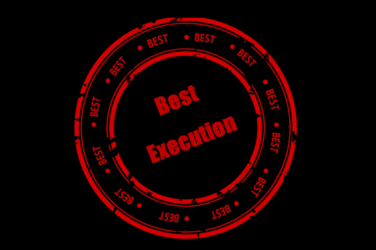Regulators in the U.S and Europe have raised the bar on best execution, broadly mandating that broker execute client trades at the best price possible, and that buy-side clients take more ownership of their own trades.
There is much more to ‘best ex’ than just the transaction price, noted panelists at the WBR Fixed Income Leaders Summit. Rather, the ideal is a comprehensive buy-side technology workflow goes beyond meeting best-execution obligations.
T. Rowe Price is adding efficiency by better enabling its traders to do more trading and less support and administrative work, especially repetitive tasks that can be automated.
“The last thing we want is our traders doing cancels and rebooks,” said Marc Wyatt, Global Head of Trading at T. Rowe. “We are trying to streamline, optimize and automate everywhere traders are not adding value.”
Morgan Stanley Investment Management is automating via more straight-through processing of trades, said Dwayne Middleton, Executive Director of Fixed Income Trading at MSIM.
Years ago, “trader used to be more like a clerk position,” Middleton said. “Now they are part of the investment team rather than part of operations.”
One initiative on the MSIM trading desk is to better capture and distill data that can improve execution. The firm is trying push efficiencies across asset class, even if only partial efficiency is possible; for example, Middleton said trading an interest rate swap on an emerging-market currency may need to be done over the phone, but the subsequent processing can be electronic.
Some investment managers are adding efficiency by automating request for quote trading, which historically has been a manual process. Some buy-side firms have automated as much as 40% of their RFQ trades, said Colm Murtagh, Head of U.S. Institutional Rates at Tradeweb.
“This creates scale and releases the trader to spend more time adding value,” Murtagh said.
Trading-platform operators are tuning into the buy side’s need for more than just the best execution price. “What is your current workflow — what are your issues and where are your bottlenecks?” is how Tradeweb would engage a client, Murtagh said.
Different products within fixed income have different needs. For instance, Murtagh said scale is a need for rates-trading desks; automated, intelligent execution is needed in swaps; and aggregated pricing is a gap in credit.
Josh Holden, Chief Information Officer at OpenDoor Trading, said before building a technology workflow, it’s helpful to assess the strategy, tactics, and evaluation underlying a desk’s trading goals. Strategy covers what products will be traded; tactics span execution, risks, and information (and leakage thereof); evaluation is about measuring and smartening execution.
“Any trading workflow has to get the basics right, such as real-time information, STP, and settlement,” Holden told Markets Media before the conference. “But how you choose to think about the bigger questions – Strategy, Tactics, and Evaluation – will help you make smarter decisions and deliver better results.”





